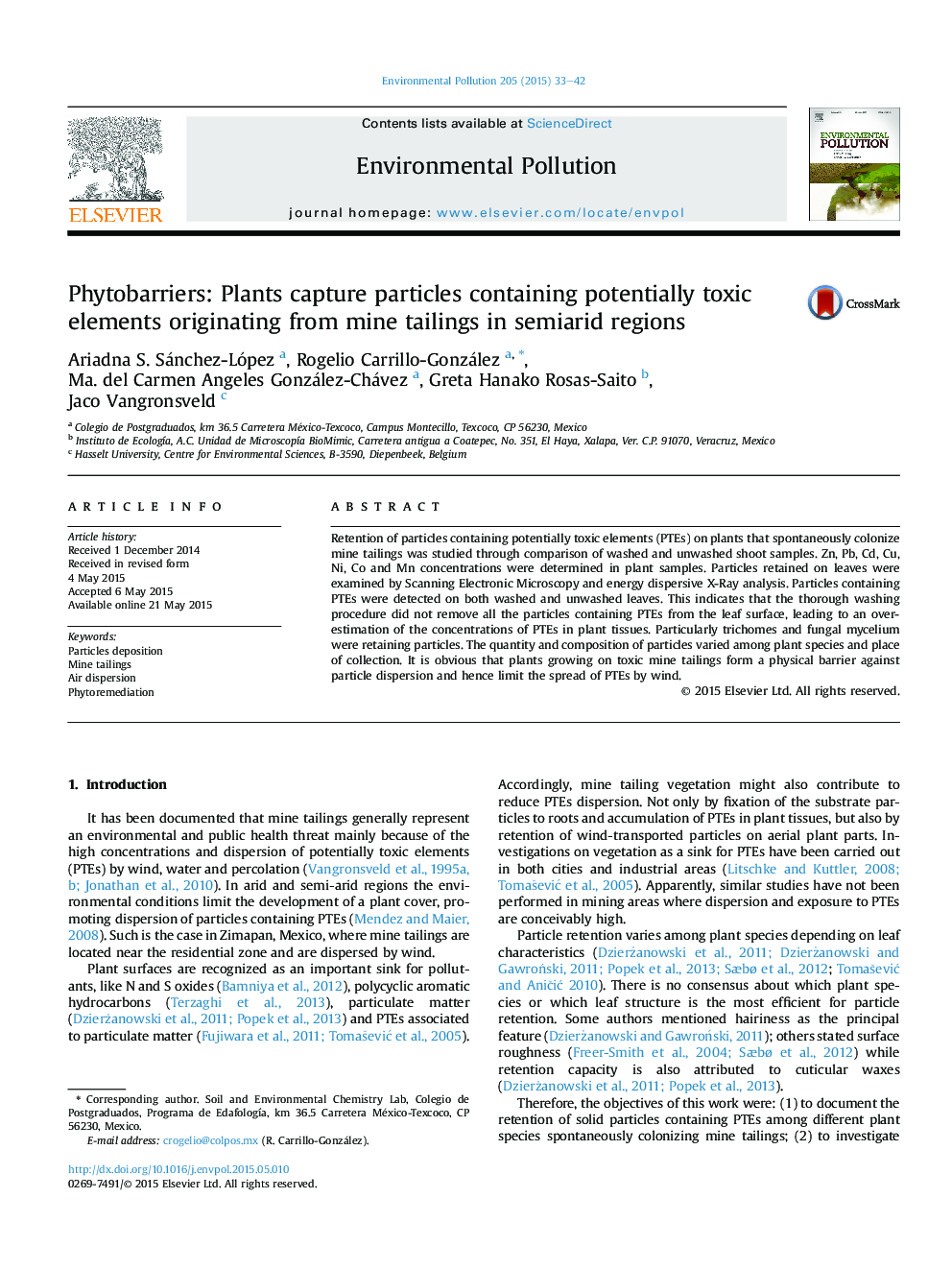| Article ID | Journal | Published Year | Pages | File Type |
|---|---|---|---|---|
| 6316616 | Environmental Pollution | 2015 | 10 Pages |
â¢Leaves act as barrier of potentially toxic elements dispersion from mine residues.â¢Brickellia veronicifolia has the highest potential for particles retention.â¢Trichomes are involved in particles retention in most of the species.â¢Washing does not remove all surface particles containing potentially toxic elements.â¢Retained particles increase potentially toxic elements concentration in shoot plants.
Retention of particles containing potentially toxic elements (PTEs) on plants that spontaneously colonize mine tailings was studied through comparison of washed and unwashed shoot samples. Zn, Pb, Cd, Cu, Ni, Co and Mn concentrations were determined in plant samples. Particles retained on leaves were examined by Scanning Electronic Microscopy and energy dispersive X-Ray analysis. Particles containing PTEs were detected on both washed and unwashed leaves. This indicates that the thorough washing procedure did not remove all the particles containing PTEs from the leaf surface, leading to an overestimation of the concentrations of PTEs in plant tissues. Particularly trichomes and fungal mycelium were retaining particles. The quantity and composition of particles varied among plant species and place of collection. It is obvious that plants growing on toxic mine tailings form a physical barrier against particle dispersion and hence limit the spread of PTEs by wind.
